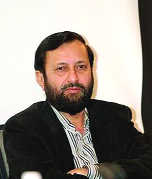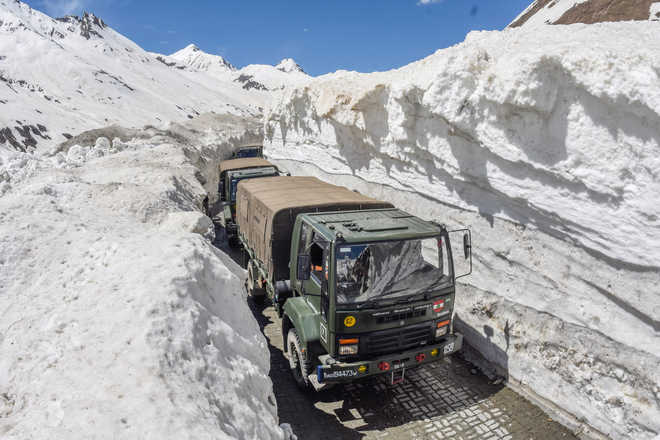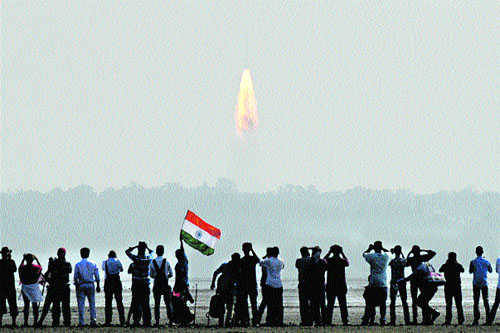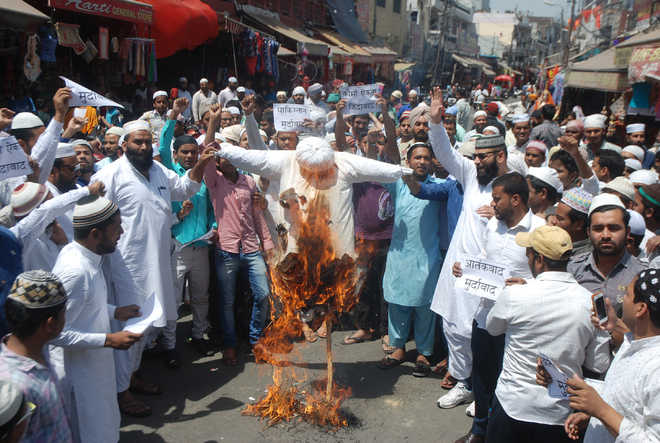The only thing scarier than the boys at war with the civilians is the boys at war with themselves. Do both sides know how to navigate this new world of the non-takeover and set new rules?
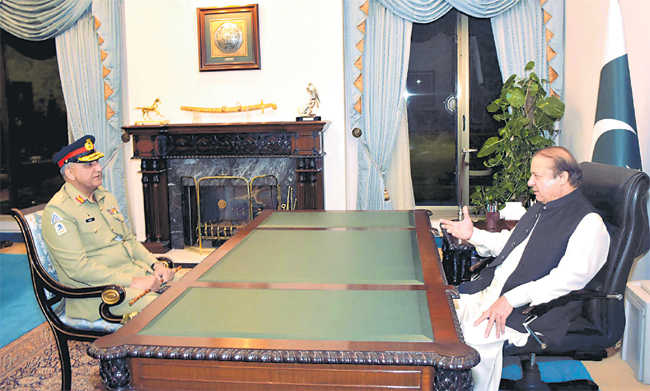 Bridging the gap: Pakistan PM Nawaz Sharif with the army chief Qamar Bajwa. The only thing that divides Pak’s civil and military is India and Afghanistan. Reuters
Bridging the gap: Pakistan PM Nawaz Sharif with the army chief Qamar Bajwa. The only thing that divides Pak’s civil and military is India and Afghanistan. ReutersIT will eventually settle down. Nobody’s taking over, no one’s going home, the original sin wasn’t big enough to justify the ultimate.But the kerfuffle that exploded into crisis has landed us in a new place. And it’s a tricky place all right. Forget the silliness of a chief cornered into lashing out, to prove to his own that he is one of theirs and not beholden to a civilian. To anyone keeping score, the new chief had already begun to walk the path of the decider, not the follower.Civ-mil can be spun many ways, but it really comes down to two things: India and Afghanistan. There’s other stuff that matters, sure, but either the differences aren’t vast or civ and mil have figured out how to share. Like with the US and China. Sure, there’s some chafing and a lot of grumbling and always some elbowing and gouging, but civ and mil aren’t poles apart.They both want Chinese and American largesse, attention and acceptance. Just as importantly, the US and China have figured out how to divide their attention between the civ and mil sides enough to prevent the whole thing from blowing apart. The only thing that really divides civ and mil is India and Afghanistan. And have a look at Bajwa’s record already.On India: Kulbhushan, regular trips to Kashmir, angry speeches and a door kept firmly shut. On Afghanistan: an early, month-long border closure; a new fierceness towards Kabul; and a matter-of-fact acceptance that the Afghan Taliban need to be accommodated. From a policy perspective, Bajwa was already on his way to joining the pantheon of the boys’ heroes.There has been one mistake though, which ended up creating a myth and obscuring a deeper problem. In style at least, Bajwa has cast himself as the anti-Raheel. The predecessor had concentrated power — giving rise to the legend of the Gang of Three, or possibly Five — and embraced a cult of personality.To move away from that the new chief did two things: he lowered his public profile and has allowed more freewheeling — or what passes as freewheeling among the boys — debate and conversation.That inadvertently created the myth outside the military of a chief who may somehow be compromised. It was a silly idea, but it also obscured a more dangerous problem. Beyond a point you don’t want to open up debate, inside the military or about the military. As long as the debate is about putting corrupt politicians in their place and the like, it’s fine. Par for the course in this place, really, and nothing too harmful.But debate has a funny way of wandering off in dangerous, unpredictable directions. What starts off as a harmless demand for corrupt politicians to be kept on a tight leash can end up questioning the theoretical legitimacy of democracy.Or the ideological foundations of the state. Or the physical boundaries and zones of influence of the country. There’s enough kooky ideas out there to suggest that you don’t want folk outside the democratic arena thinking they’re free to suggest and debate the fringe stuff. In a way, thankfully, the chief’s tweet by proxy has reversed much of that.The only thing scarier than the boys at war with the civilians is the boys at war with themselves. The chief’s tweet by proxy has clarified: he’s theirs, he’s the boss and he means business. But the tweet has exposed a new problem. Call it the non-takeover problem. The more upright the chief, the more of a straight shooter, the more his-only-business-is-the-boys kind of chief, the more he’s liberated from the suspicion of harbouring greater ambitions. And being liberated from the suspicion of harbouring greater ambitions means he can say exactly what’s on his mind. Like he did in the Tweet by proxy.Crisis triggered. But then there’s the other side of the non-takeover problem: the civilian knows that too. If one side is liberated to speak its mind because it knows that takeover is not an option, is the other side free to ignore the liberated speaker because it knows takeover isn’t an option? And so the spectacle of the past week — what had been rejected had not been reissued. Just stony silence.And that’s where it gets tricky. Do both sides know how to navigate this new world of the non-takeover and set new rules? In some ways, a draw has already been achieved. One side roared, the other side didn’t blink. Both have something to carry off to their constituencies and mollify the ego. The boys have their new king, the civilians have their survivor — maybe a bit messy, but messy is what we do best.If the draw is accepted, it could be a new rule of sorts — but a highly unstable one. Roar versus silence can work the first time round. But a draw the first time round will affect the next round — there’ll be pressure for the roar to be louder and a draw not to be settled for.On the other side, there could be a temptation to provoke a louder roar or to retaliate when roared at. Silence is the hardest move of all. The other option is to accept that a highly public draw was a bad idea — that one side should not have roared and that the other side should not have poked. But if they knew how to cooperate, we wouldn’t have civ-mil to begin with. The thought of a four-term Prime Minister and a year-and-a-half-old chief with this mutual baggage is an unsettling one.By arrangement with the Dawn.














